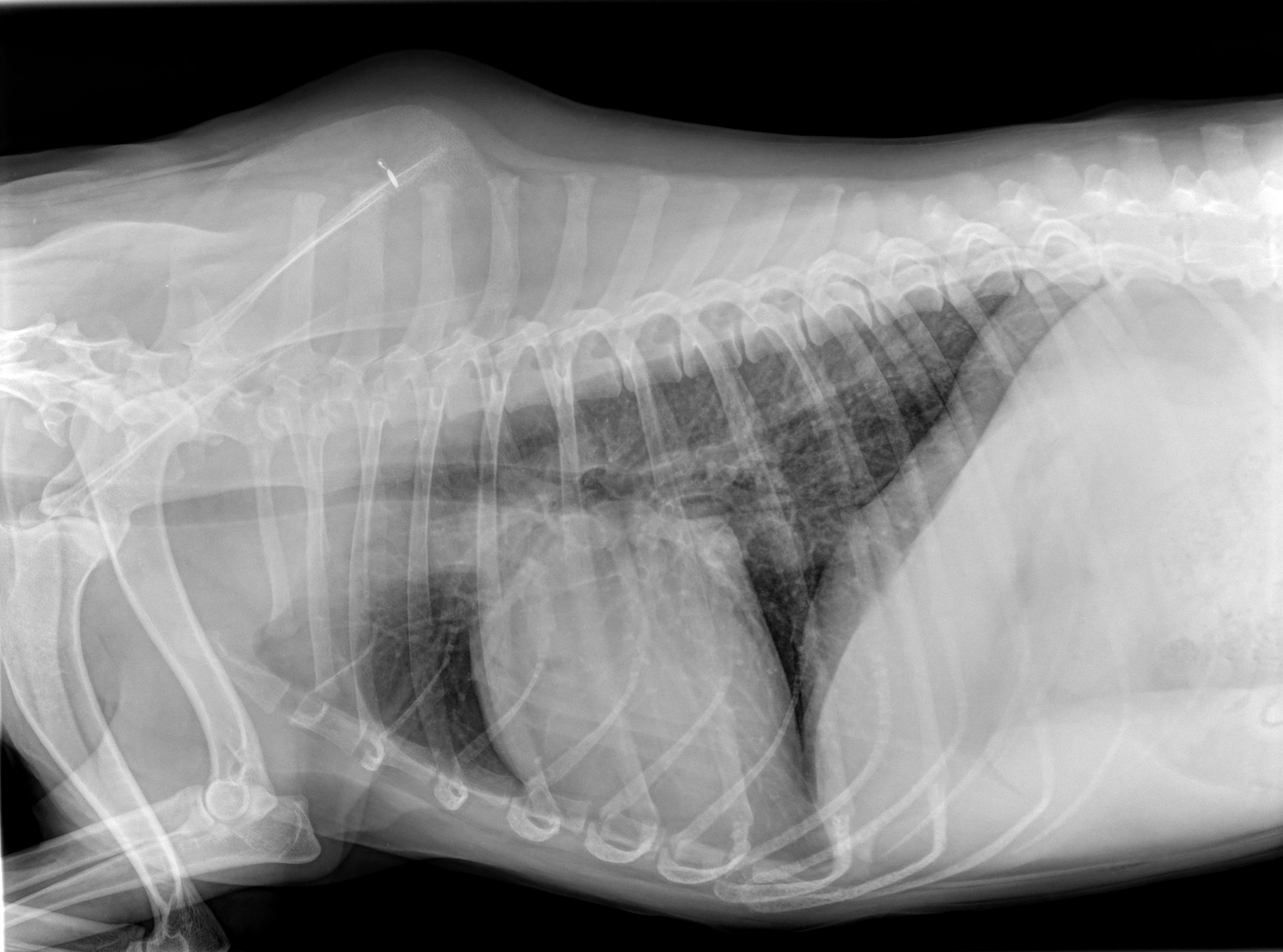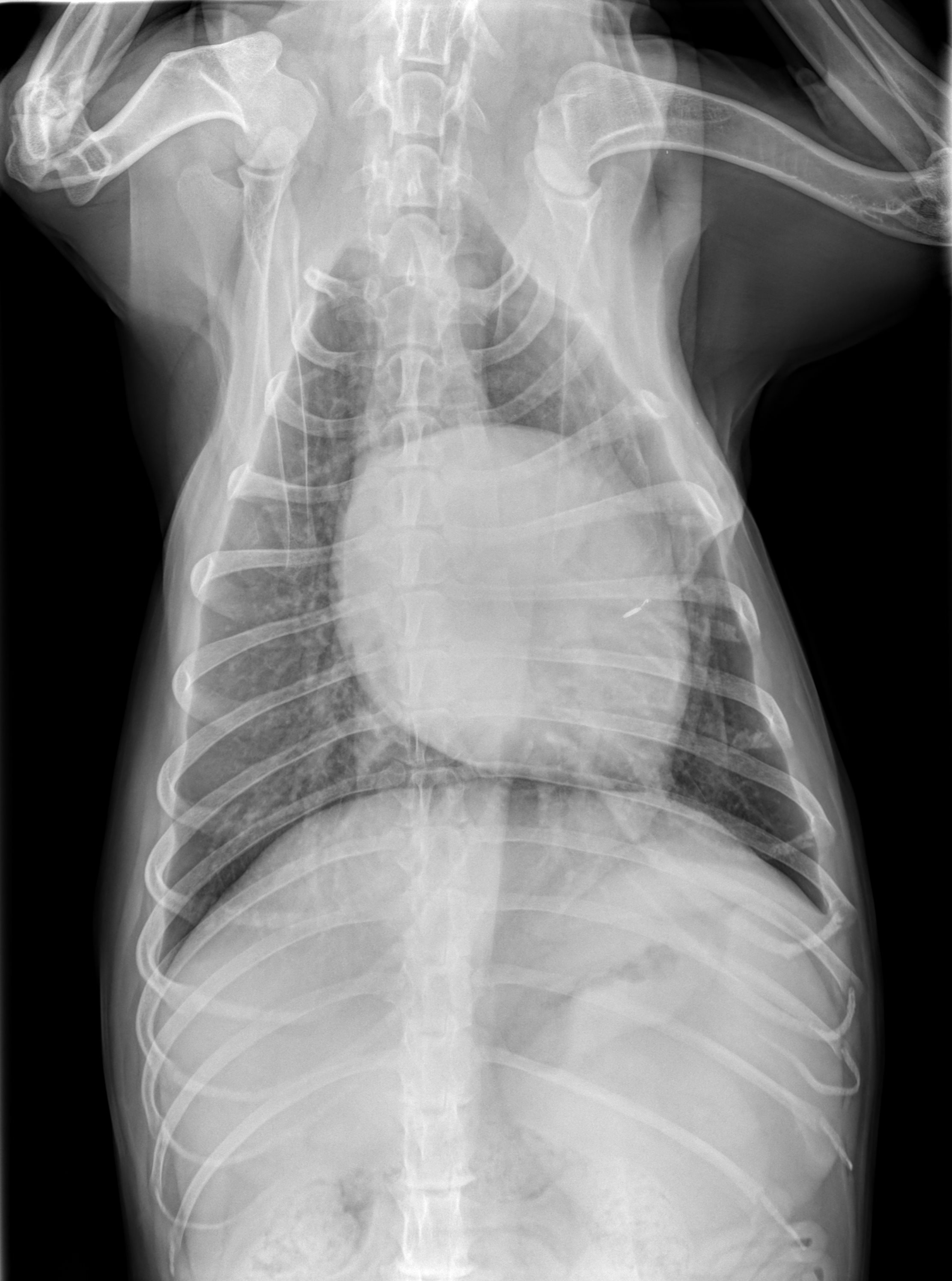
Zorro
 Case Background
Case Background
Name: Zorro
Age: 7 years old
Sex: Male
Breed: Cocker Spaniel
Weight: 19.2kg
Reason for visit: Coughing, pre-dental evaluation
Age: 7 years old
Sex: Male
Breed: Cocker Spaniel
Weight: 19.2kg
Reason for visit: Coughing, pre-dental evaluation
 Case History
Case History
Please review Zorro’s clinical history.
Attitude/demeanor: Normal demeanor, bright, alert and responsiveCoughing: Cough started 6-8 months ago, may be getting more frequent; no associated respiratory difficulty, worse with activity/excitement (especially after drinking water).
Abnormal respirations: Otherwise normal breathing, no distress/dyspnea.
Exercise intolerance: None, normal activity
Sleep patterns: Normal
Weight change (loss or gain): Static over the last 18 months
Appetite: Eats well (very well)
Usual diet: Canine Maintenance
Vomiting: None
Diarrhea: None
Syncope: None
Change in urinary habits: None, normal urinations
Change in drinking habits: None, normal drinking
Other symptoms or signs: None
Preventatives: Up to date on vaccines and flea, tick and heartworm prevention
 Physical Exam - General
Physical Exam - General
Please review Zorro’s physical exam results
Body condition: 6/9, slightly overweightAttitude: Normal
Mobility | gait: Normal
Posture: Normal
Hydration: Normal
Arterial pulse – rate, regularity, intensity: Strong, slightly irregular but synchronous with heart beats
Mucous membranes – color & CRT: Pink, CRT<2
Abdominal palpation: No significant findings
Lymph nodes: Normal
Oral cavity: Grade 3 dental disease (moderate to severe dental calculus)
 Physical Exam - Auscultation
Physical Exam - Auscultation
Please review the results of Zorro’s auscultation.
Heart rate & respiratory rate: 84 bpm and 24 bpmHeart rhythm: Slightly irregular
Heart sounds: Heart sounds are of normal intensity, grade 4/6 left apical systolic murmur
Extra sounds – clicks or gallops: No click/gallop
Precordial palpation: No thrill
Lung auscultation: Within normal limits
 Physical Exam - Differential Diagnosis
Physical Exam - Differential Diagnosis
The following are potential diagnosis for you to consider at this time. Based on the history and the physical examination, please indicate the likelihood of each as:
- High (could explain most or all of the signs)
- Possible (less likely to explain most of the signs)
- Unlikely
MYXOMATOUS MITRAL VALVE DEGENERATION
CONGESTIVE HEART FAILURE
PRIMARY AIRWAY DISEASE
 Diagnostic Test Selection
Diagnostic Test Selection
NON-INVASIVE BLOOD PRESSURE
CBC WITH PLATELET COUNT
SERUM BIOCHEMICAL PROFILE (INCLUDES ELECTROLYTES)
HEARTWORM ANTIGEN TEST
NT-PROBNP
THORACIC RADIOGRAPHS
ABDOMINAL RADIOGRAPHS
ECHOCARDIOGRAM DOPPLER STUDIES
ELECTROCARDIOGRAM
 Blood Pressure
Blood Pressure
Systolic blood pressure: 130mmHg, #4 cuff
Diastolic blood pressure: Not available for this case
Mean blood pressure: Not available for this case
Consensus Statements of the American College of Veterinary Internal Medicine (ACVIM) provides the veterinary community with up-to-date information on the pathophysiology, diagnosis, and treatment of clinically important animal diseases. ACVIM published guidelines for the identification, evaluation, and management of systemic hypertension in dogs and cats in the the Journal of Veterinary Internal Medicine.
Click here to view and download a PDF of the updated ACVIM consensus statement, guidelines for the identification, evaluation, and management of systemic hypertension in dogs and cats.
Diastolic blood pressure: Not available for this case
Mean blood pressure: Not available for this case
Consensus Statements of the American College of Veterinary Internal Medicine (ACVIM) provides the veterinary community with up-to-date information on the pathophysiology, diagnosis, and treatment of clinically important animal diseases. ACVIM published guidelines for the identification, evaluation, and management of systemic hypertension in dogs and cats in the the Journal of Veterinary Internal Medicine.
Click here to view and download a PDF of the updated ACVIM consensus statement, guidelines for the identification, evaluation, and management of systemic hypertension in dogs and cats.
 Radiography
Radiography
Please review Zorro’s radiographs.
Click here for Zorro’s’s radiography viewer (measure VHS and VLAS here)View the right lateral radiograph
Is this patient in congestive heart failure?
Could this dog be coughing from heart disease?
 Echocardiography
Echocardiography
Please review the results of Zorro’s echocardiogram.
Watch Zorro's echo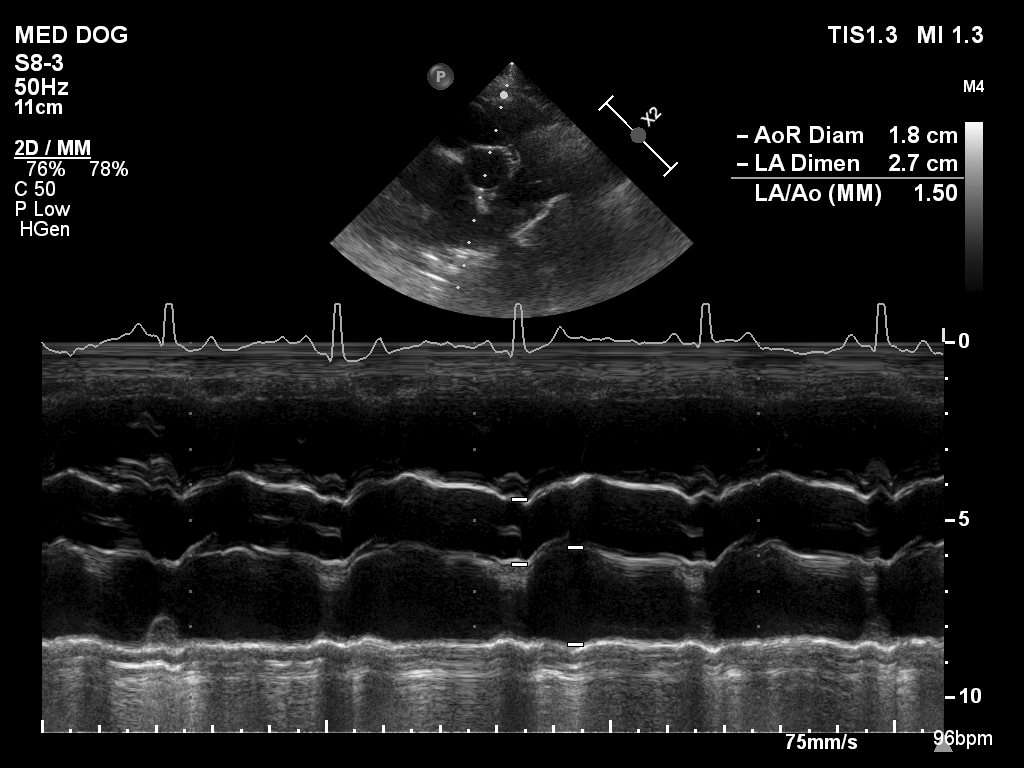
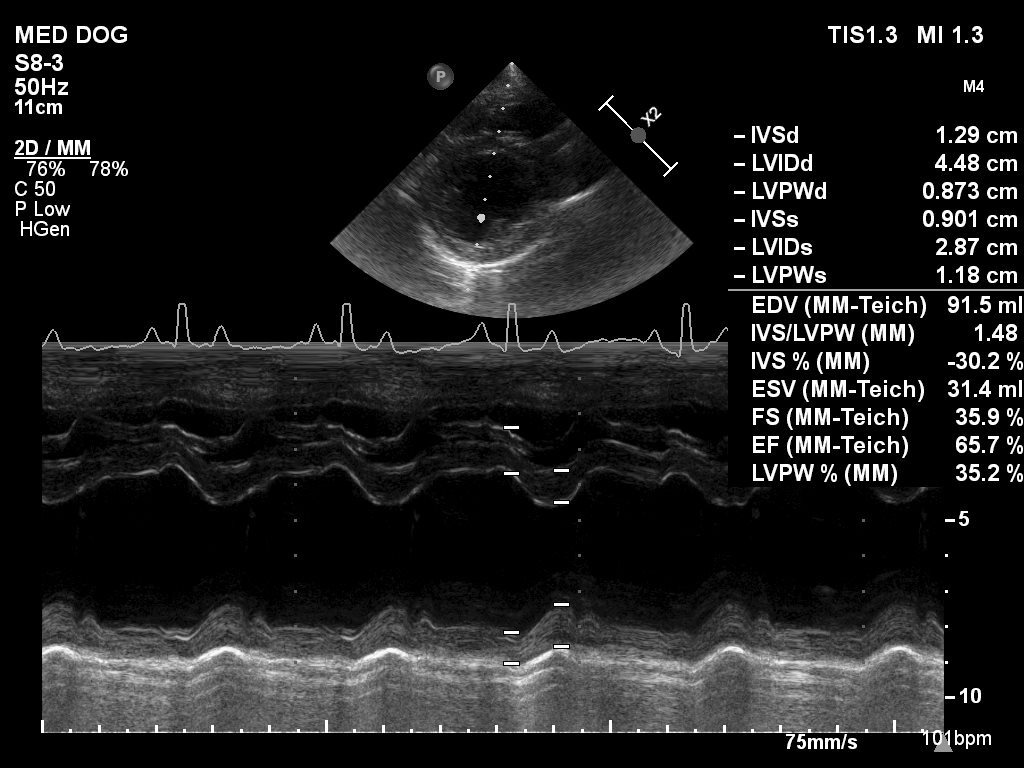
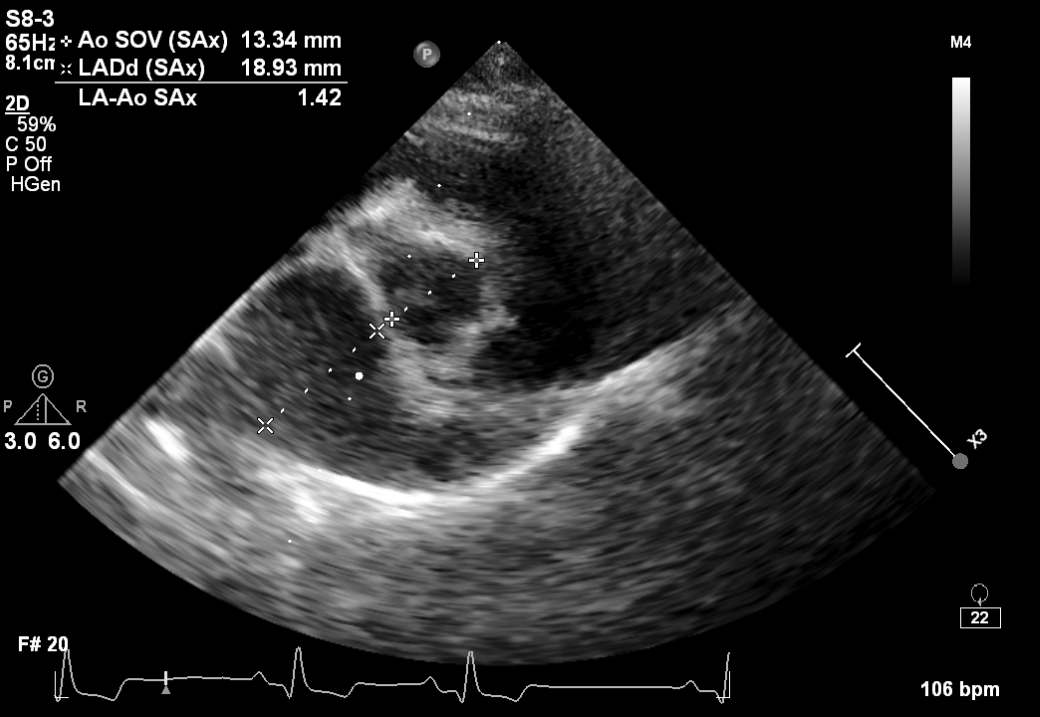
 ECG
ECG
Please review Zorro’s ECG and answer the following questions.
Click here for Zorro's ECGWhat is the heart rate?
What is the rhythm diagnosis?
 Diagnosis & Treatment
Diagnosis & Treatment
You’re ready to form a diagnosis and treatment plan for Zorro! Please select your answer to each question below.
What kind of heart disease does this dog have?
What is the likely cause of the cough?
What treatment(s) would you recommend for Zorro?
 Follow Up
Follow Up
Follow-up: A repeat echo and chest X-rays would be warranted in another 6-12 months to monitor for evidence of heart disease progression. An earlier followup appointment would be recommended for followup of the dog’s primary respiratory cough after empiric therapy.
 Post Test - CE
Post Test - CE
Please answer the following questions.
Which of the following represents the most compelling finding that heart disease is present?
Which diagnostic test in this case was most important in excluding left sided congestive heart failure?
Which finding in this case makes heart disease an unlikely cause for the cough?
Under what circumstances/when should you perform a BNP in a case like this?
Are you ok doing anesthesia for a dental in this dog?
 RACE Certification
RACE Certification
RACE Certification
Fill out the following form in order to receive your certificate.
